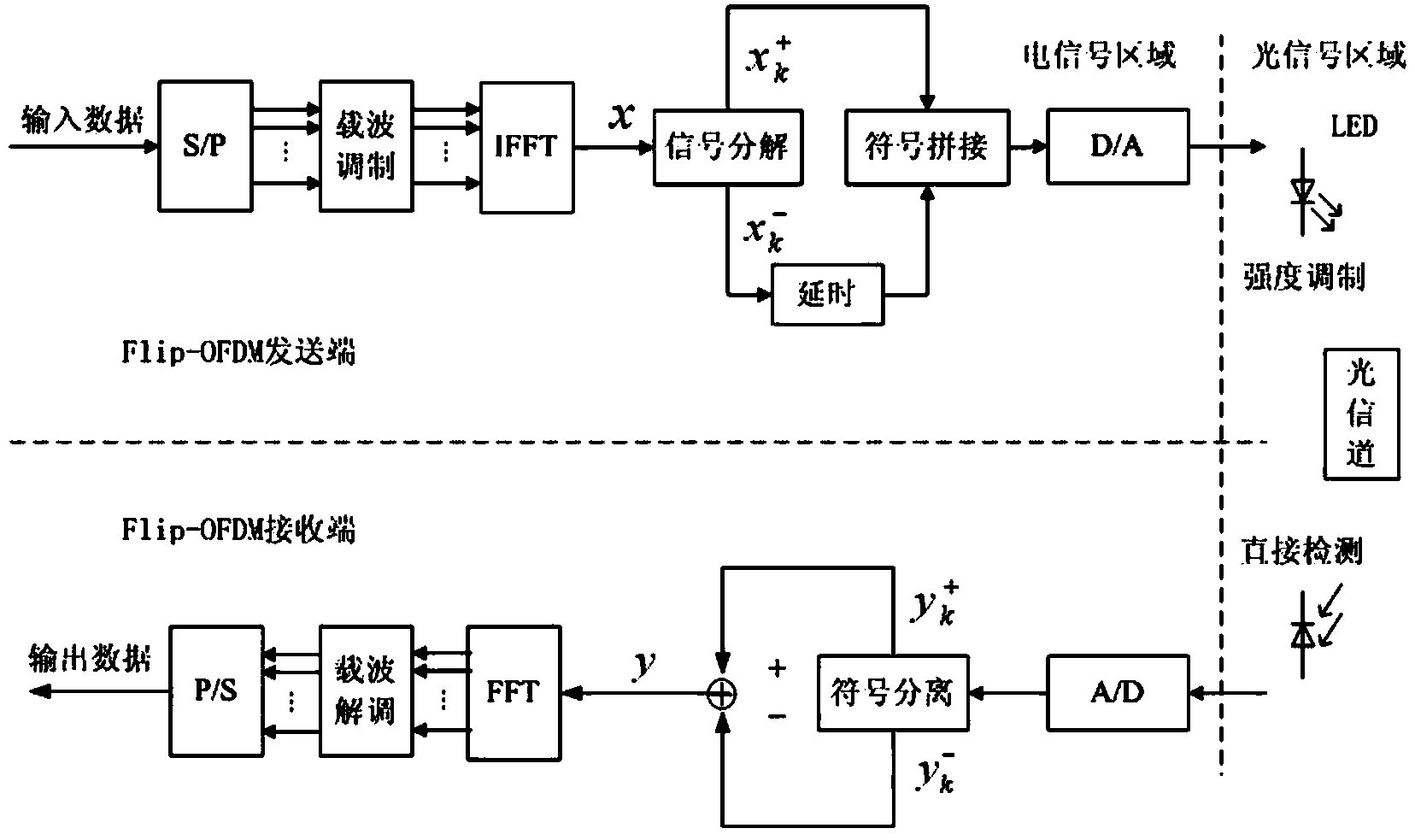Dynamic compensation method for reducing LED (Light Emitting Diode) nonlinear distortion of visible light Flip-OFDM (Orthogonal Frequency Division Multiplexing) communication system
A nonlinear distortion and communication system technology, applied in the field of dynamic compensation, can solve problems such as LED nonlinear distortion, small number of coding patterns, and restricted communication system performance
- Summary
- Abstract
- Description
- Claims
- Application Information
AI Technical Summary
Problems solved by technology
Method used
Image
Examples
Embodiment Construction
[0046] In the specific implementation process, the basic block diagram of the physical layer of the Flip-OFDM system is established first. Such as figure 1 As shown, the transceiver block diagram of the Flip-OFDM system is given. The information processing flow of the physical layer of the Flip-OFDM system is as follows: at the sending end, the input bit stream is converted and modulated to obtain the frequency domain data stream, and the frequency After the domain data is further expanded into a Hermitian conjugate symmetric sequence, the IFFT transformation is performed, and then the obtained OFDM real signal is decomposed into a positive signal and an inverted negative signal and sent out; at the receiving end, the positive signal and the inverted negative signal are received, and the two are subtracted After FFT transformation, Hermitian conjugate symmetry removal, demodulation, and parallel-to-serial conversion, the output bit stream is obtained.
[0047] The LED voltage...
PUM
 Login to View More
Login to View More Abstract
Description
Claims
Application Information
 Login to View More
Login to View More - R&D
- Intellectual Property
- Life Sciences
- Materials
- Tech Scout
- Unparalleled Data Quality
- Higher Quality Content
- 60% Fewer Hallucinations
Browse by: Latest US Patents, China's latest patents, Technical Efficacy Thesaurus, Application Domain, Technology Topic, Popular Technical Reports.
© 2025 PatSnap. All rights reserved.Legal|Privacy policy|Modern Slavery Act Transparency Statement|Sitemap|About US| Contact US: help@patsnap.com



